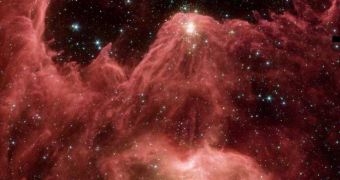Cosmological theories trying to explain the universe as we see it today postulate that, only a few moments after the Big Bang, the matter in the universe should have been composed of equal amounts of regular matter and anti-matter, but this is not what we are observing today, is it? We are not made half of matter and half anti-matter. Why is this? Further still, what determines the appearance of massive magnetic fields stretching across the galaxies?
These are just two of the most important problems attacked by cosmologists today. At the Cosmology Meets Condensed Matter conference which took place in London last month, Ray River from the Imperial College of London proposed an experiment in which ideal fluids could simulate the universe in the first moments of its life. It would not be the first time when ideal fluids are involved in cosmological studies, as multiple experiments in powerful particle accelerators have already shown that matter in the universe, just a few fractions of a second after the Big Bang, behaved much in the same way as a superfluid with no viscosity.
One of the ideal fluids routinely used by physicists around the world is helium-3, which, when cooled to extreme temperatures, experiences no flow resistance, and may event escalate the wall of the container in which it is being hold.
Matter and anti-matter annihilate each other when put together, but if only that would have driven the processes in the universe, then in the end there would actually be no form of matter at all. Cosmologists argue that something else must have had a more important contribution to the annihilation of anti-matter particles. Such as the presence of virtual particles, for example, particles that routinely pop in and out of existence throughout the whole volume of the universe. Tanmay Vachaspati from the University of Princeton argues that such particles would create magnetic monopoles in vacuum - theoretical particles that experience single magnetic charge, similar to the electric charge carried by several elementary particles in the Standard Model - and, by doing so, they convert the anti-matter particles into regular matter so that, in the end, matter will remain dominant throughout the universe.
Additionally, these magnetic monopoles are thought to leave behind twisted magnetic fields, which could stretch over extreme areas of space, as the universe inflates.
But, as usually, there is a catch. These magnetic remnants are impossible to spot, mostly due to the remnant Cosmic Microwave Background observed in every direction of the universe. Vachaspati says this isn't a problem with helium-3 superfluid, as a spinning container should create vortices similar to the monopoles created by virtual particles. As the monopole disappears, the particles in the ideal fluid should leave behind twisted field lines, to prove the theory regarding the influence of virtual particles over the conversion of anti-matter into ordinary matter.

 14 DAY TRIAL //
14 DAY TRIAL //